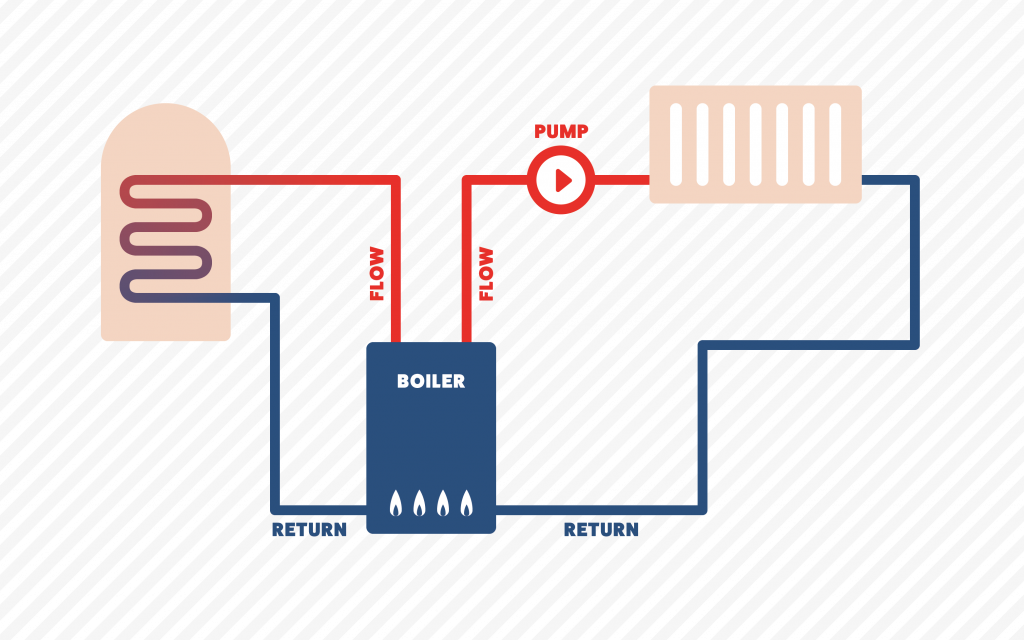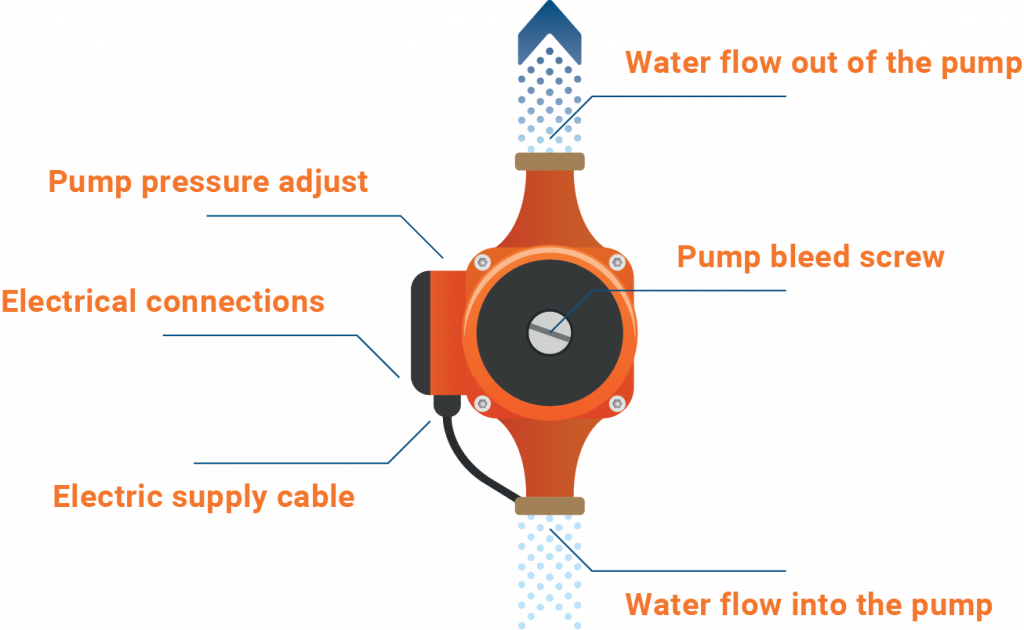Central Heating Pumps Explained (Expert Guide)
A central heating pump is a small mechanical tool installed on your central heating system, which allows you to pump hot water around your home efficiently.
But if this is the first time you’ve ever heard of a central heating pump, or you’re replacing a boiler pump for the first time, the vast number of central heating pumps on offer can be overwhelming.
No doubt you’re thinking:
“What is a central heating pump? How does a central heating pump work? Do I need a central heating pump?”
That’s why we’ve developed this complete guide to central heating pumps. Taking you step by step through the world of central heating pumps, you will be able to buy, fix or replace your central heating pump in no time.
What is a central heating pump?
A central heating pump is a small mechanical tool installed on your central heating system which is used to speed up the process of circulating hot water from your boiler to your radiators and back to the boiler.
The diagram below shows you the placement of a central heating pump in a central heating system.

How does a central heating pump work?
The central heating pump is like the heart of your heating system. They work by taking water into the pump, pressurising the water with the impellers, before pumping the water around your heating system at a higher speed. This helps ensure that hot water is efficiently pumped around your home.
Central heating pumps explained:
Step 1: Water Intake
The water enters the central heating pump shortly after being heated by the central heating system.
Step 2: Impellers
Central heating pumps are of a centrifugal design. This means that they use impellers (think aeroplane engines) to pressurise water.
Step 3: Water outlet
When the water goes through the impellers, the water is then pushed out of the pump at a higher speed than it entered.
What are the main components of a central heating pump?
Central heating pumps are not complicated devices. Most boiler pumps will be made up of six components, each of which you can see in the diagram below.

Please keep in mind that some pumps will not be supplied with a pressure adjustment dial as standard. Please check the product descriptions prior to purchase.
Water Flow Inlet
This is the area in which the hot water enters the pump. The diameter of the water inlet will be one factor that dictates the maximum flow rate of your pump.
Water Flow Outlet
This is the area in which the pressurised hot water exits the pump and travels around your central heating system. Again, the diameter of the water outlet will be one factor that dictates the maximum flow rate of your pump.
Pump Pressure Adjust
The pressure adjust dial is an electronic component of a central heating pump that allows you to increase the pressure of the water in your central heating system. If you are finding that specific radiators are not getting the required heat, then simply increase the pressure using the adjustment dial.
Pump Bleed Screw
Airblocks are a common issue that impact the performance of a central heating pump. Following the manufacturer instructions, the bleed screw helps you bleed trapped air out of the system.
Electrical Connections
This is where you can manage the pump's electronic configuration. Again, please read the manufacturer instructions before use.
Electricity Supply Cable
This is where you connect the pump to the mains electricity supply.
Where is my central heating pump located?
Each home is different, and the location of your central heating pump will be determined by the location of the boiler or the expertise of the plumber who installed it.
The most common locations to find a central heating pump are:
- Near the boiler or hot water cylinder
- Airing cupboard
- Under the stairs
Does a central heating pump use electricity?
One of the great things about central heating pumps is that they only use electricity when you switch on the central heating system. This helps you save money on your electricity bills.
Most central heating pumps will run off your main electricity supply, but you can also purchase cheaper, battery-powered models - although we wouldn’t advise it.
How much power does a central heating pump use?
Most domestic central heating pumps run on 240 volts and use around 50 watts of power, which is a lot less than the amount of power needed to operate a kettle. Saying this, your central heating pump is unlikely to be on full power and probably not running all day, so it's possible that you will be using less than half the power of operating a kettle a few times a day in a modern, well-insulated home.
How long does a central heating pump last?
All central heating pumps sold here at Anchor Pumps come with a warranty.
These are usually longer than the manufacturer warranty and are based on our experience with each pump.
The warranty reflects the minimum time frame we believe the pump will be in peak condition, not how long we think the pump will last.
Most pumps will last for well over ten years without any hiccups.
Our warranties for a variety of central heating pump brands are as follows:
- Grundos Central Heating Pumps - 5 years
- Lowara Central Heating Pumps - 2 years
- Dab Central Heating Pumps - 3 years
Contact Anchor Pumps
If you’re struggling for advice, call our dedicated pump experts for free advice on 0800 112 3134 or 0333 577 3134.
We’re open Monday to Friday 07:00 - 17:30 and Saturday 08:30 - 12:30.

